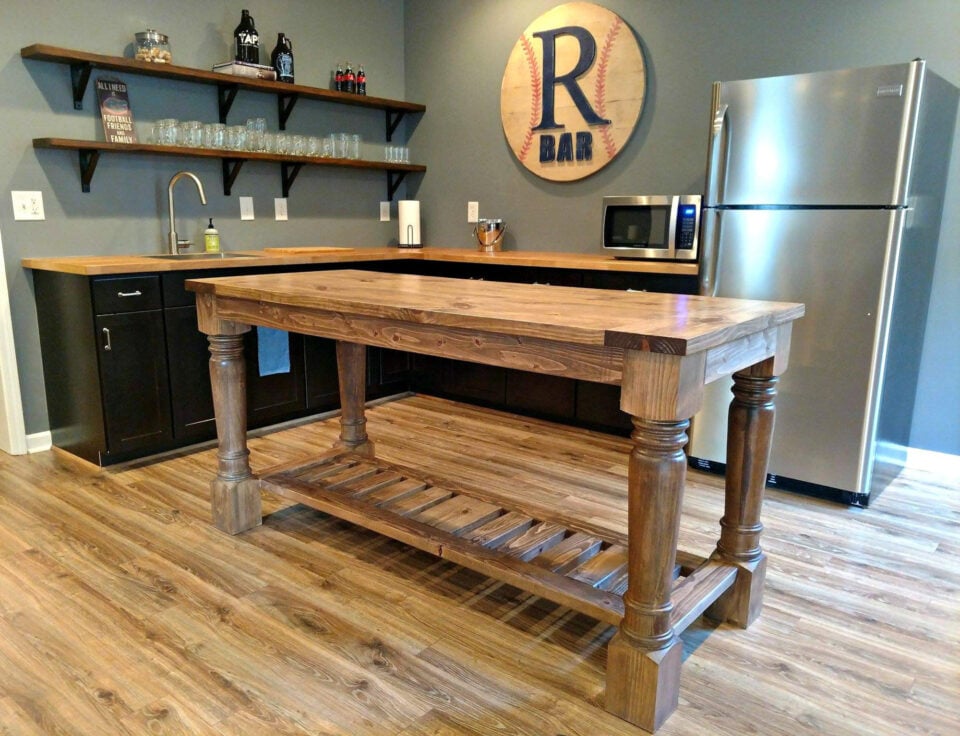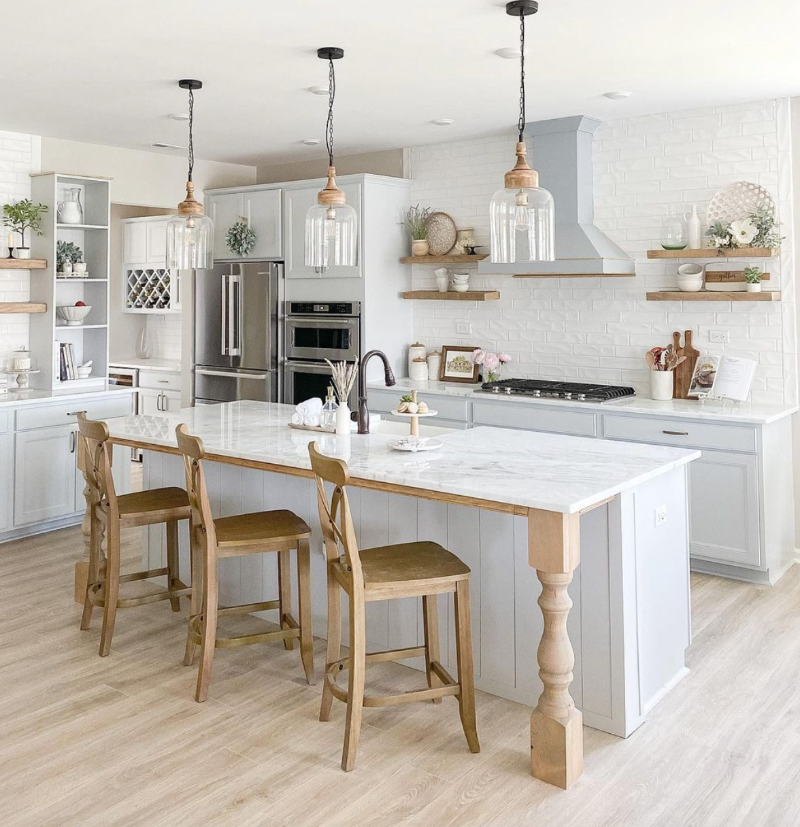Checking Out the Vital Features of a Cooking Area Island Leg for Your Culinary Space
The kitchen island offers as a central center in any culinary room, and the option of leg layout is pivotal in improving both its performance and aesthetic appeal. Comprehending the essential functions of cooking area island legs-- including material choices, design styles, and security aspects-- can substantially influence the general experience within the kitchen area. As we check out these elements, we will certainly reveal just how thoughtful customization and accessories can raise your kitchen island from a plain energy to a striking focal point. What particular factors to consider should be prioritized to accomplish this equilibrium?
Relevance of Kitchen Area Island Legs
Kitchen area island legs play an important duty in both the functionality and aesthetics of a kitchen area area. They not only support the weight of the island however likewise enhance the total design, adding to the kitchen's visual charm. The choice of legs can dictate the design of the kitchen, be it modern-day, traditional, or rustic.
Functionally, robust and appropriately designed legs guarantee stability, permitting the safe use the island for different tasks such as food prep work, dining, or entertaining. Solid legs avoid wobbling and changing, giving a trusted surface for everyday activities.
In addition, the height and placement of the legs can affect the comfort degree for those seated at the island. A well-considered elevation can accommodate bar stools or chairs, promoting an inviting setting for events.
In enhancement to these useful considerations, cooking area island legs can function as a prime focus in the room (kitchen island leg). Ornamental or distinctly designed legs can elevate the layout visual, making the island a focal point. Hence, choosing the right kitchen area island legs is necessary for balancing type and feature in any cooking area
Material Options for Legs
Selecting the suitable material for kitchen area island legs significantly influences both longevity and layout. Common product options include rock, metal, and wood, each offering unique benefits.
Timber is a prominent choice due to its heat and convenience. It can be conveniently tailored to match various decor designs, from rustic to contemporary. Hardwoods like oak and maple give superb strength and durability, while softer woods can be extra prone to tear and use.
Steel legs are favored for their streamlined, modern aesthetic. kitchen island leg. Stainless-steel and aluminum are not only durable however likewise immune to rust and corrosion, making them perfect for cooking area environments. They can create a commercial appearance and are typically readily available in numerous surfaces to enhance other cooking area components
Rock legs, such as granite or marble, include a component of high-end and security. While larger than other materials, they offer outstanding resilience and can withstand considerable weight. However, they might require extra assistance to ensure correct balance.
Inevitably, the selection of material ought to line up with both functional demands and the total layout vision of the kitchen area, making sure that the island legs improve both energy and looks.
Style Designs to Think About
What layout styles should be taken into consideration when picking legs for a kitchen area island? The selection of leg style substantially influences the total visual of your culinary room. For a my sources contemporary cooking area, minimalistic and sleek official site leg styles, such as stainless-steel or geometric shapes, can enhance the contemporary allure, supplying a tidy and minimalist appearance.
In comparison, conventional cooking areas benefit from timeless styles such as transformed or carved wood legs, which add heat and personality. These alternatives commonly include elaborate information that enhance vintage home furnishings. For a rustic ambiance, consider legs made from reclaimed timber or functioned iron, which bring an organic, natural top quality to the area.
If you lean towards a commercial motif, durable steel legs with a troubled coating may be optimal, providing an edgy yet sophisticated touch. Furthermore, farmhouse design cooking areas can integrate chunky legs that evoke a sense of strength and homeliness.

Height and Security Variables
The height and security of a kitchen area island are vital components that straight impact its capability and user experience. A suitable kitchen area island leg must supply sufficient height to suit a range of tasks, from cooking to informal eating. Usually, cooking area islands separate 36 to 42 inches tall, aligning with standard counter and bar elevations. This array ensures convenience for users while doing different tasks, hence boosting the overall functionality of the room.
Security is equally essential, particularly as kitchen islands often serve as focal points in culinary environments. The leg's accessory to the island's base our website have to be safe and secure, guaranteeing durability and strength versus the wear and tear of everyday use.
Modification and Devices
Personalization alternatives and accessories for kitchen island legs can significantly enhance both the visual charm and capability of the area. Home owners can pick from a variety of materials, consisting of metal, stone, and wood, permitting for smooth combination with existing kitchen decor. The option of finish-- be it a natural discolor, paint, or powder finishing-- further personalizes the look, making sure that the island matches the overall design theme.
Along with material and finish, home owners may likewise discover the consolidation of devices such as decorative brackets, adjustable feet, or incorporated shelving. Braces can supply extra assistance while adding to a modern-day or rustic visual. Flexible feet are particularly useful for unequal flooring, making certain the island remains steady and degree, which is important for both safety and usability.

Verdict
Finally, cooking area island legs offer a critical function in offering stability and enhancing the total aesthetic of the cooking room. The selection of products and layout styles adds to both performance and visual charm, while factors to consider of elevation and security guarantee useful use. Modification choices and devices can boost the kitchen island, making it a distinct focal point within the home. Thus, mindful factor to consider of these functions is essential for an efficient kitchen area style.
The kitchen island serves as a main hub in any type of cooking area, and the option of leg design is crucial in boosting both its functionality and visual allure. Comprehending the necessary attributes of cooking area island legs-- including material options, style styles, and security aspects-- can dramatically influence the general experience within the kitchen.Cooking area island legs play a crucial duty in both the performance and looks of a kitchen area area.What layout styles should be thought about when choosing legs for a kitchen island?In final thought, kitchen area island legs serve an important function in giving security and enhancing the overall aesthetic of the culinary area.